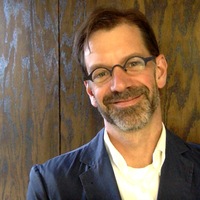That first year at seminary — or any year at seminary, for that matter — can be extremely stressful.
Many students face financial challenges. They worry about upending their families, finding new schools for the kids. re-arranging family schedules and adjusting to demanding courseloads.
For Kelly Moreland Jones, the angst also comes from being a woman called to ministry — “but definitely not children’s ministry or student ministry,” she wrote in a blog post for Central Baptist Theological Seminary in Shawnee, Kan.
“In my denomination there’s a little bit of history about the struggle for women to be accepted as equals behind the pulpit.”
Helping students to embrace and learn from the risks of seminary and ministry life is one of the goals of a new study titled “Learning Pastoral Imagination: A Five-Year Report on How New Ministers Learn in Practice.”
The Auburn Study was financed by the Lilly Endowment and directed by Eileen Campbell-Reed and Christian Scharen.
Among its key conclusions are that seminary students develop their sense of “pastoral imagination,” which is “an embodied, relational and emotional” ability to assess and respond to ministerial situations, said Campbell-Reed, associate professor of practical theology at CBTS in Tennessee.
Partly intellectual, partly intuitive, the skill is vital to preaching, pastoral, administrative and missions situations, Campbell-Reed said.
“It’s lot of practice and that’s why it takes time,” she said. “You can’t learn it all in seminary.”
Engaging imagination
The study found that the traditional model of theological study should be inverted, said Scharen, vice president for applied research at Auburn Theological Seminary.
Rather than presenting students with a dizzying array of disciplines and leaving it to them to see how they connect in real ministry, institutions and faculty should help students connect those dots, he said.
That’s what it means to offer integrated studies, he said.
“If you’re teaching New Testament you can teach the nitty gritty of the New Testament, but you need to think of that in relation to ministerial leadership, Bible study or preaching,” he said.
That approach is in contrast to two centuries of theological education, which highly prized academic and intellectual learning.
“Students were marched through a set of disciplines related to academic communities, like history or biblical studies,” he said. “The seminary curricula was a bunch of parts and the students had to put together what the whole was and what to do with it.”
“Learning Pastoral Imagination” envisions a process that goes way back, Scharen said.
“It is to refocus more on an ancient wisdom,” he said. “We use ‘pastoral imagination’ as a short cut phrase for a developmental, embodied, practical wisdom.”
Ministers steeped in that kind of learning would eventually learn how to handle themselves in a pulpit or at a bedside.
“They will know what to say and how to comport themselves,” he said. “It’s knowing the right thing to do at the right time.”
The right time to publish the study came last spring, Campbell-Reed said.
“And when something is written, it’s only half done,” she added. “Now we need to share it.”
Challenging students
The sharing has come partly in the form of a social media campaign across multiple platforms, including Facebook, Instagram and Twitter.
Couched in a “back to school” format consisting of daily prayers, key words and personal stories, the campaign challenges students to do their part in this new style of learning.
They are encouraged to build networks and community, to take risks in learning and ministry, to find sacred spaces in which to grow and ways to integrate classroom and contextual learning.
Faculty and staff also are targeted in the campaign.
“As theological teachers we get real focused on what we are trying to convey to students in the classroom,” Campbell-Reed said. “But if we are not including their life experiences into the situation, it won’t stick over time.”




